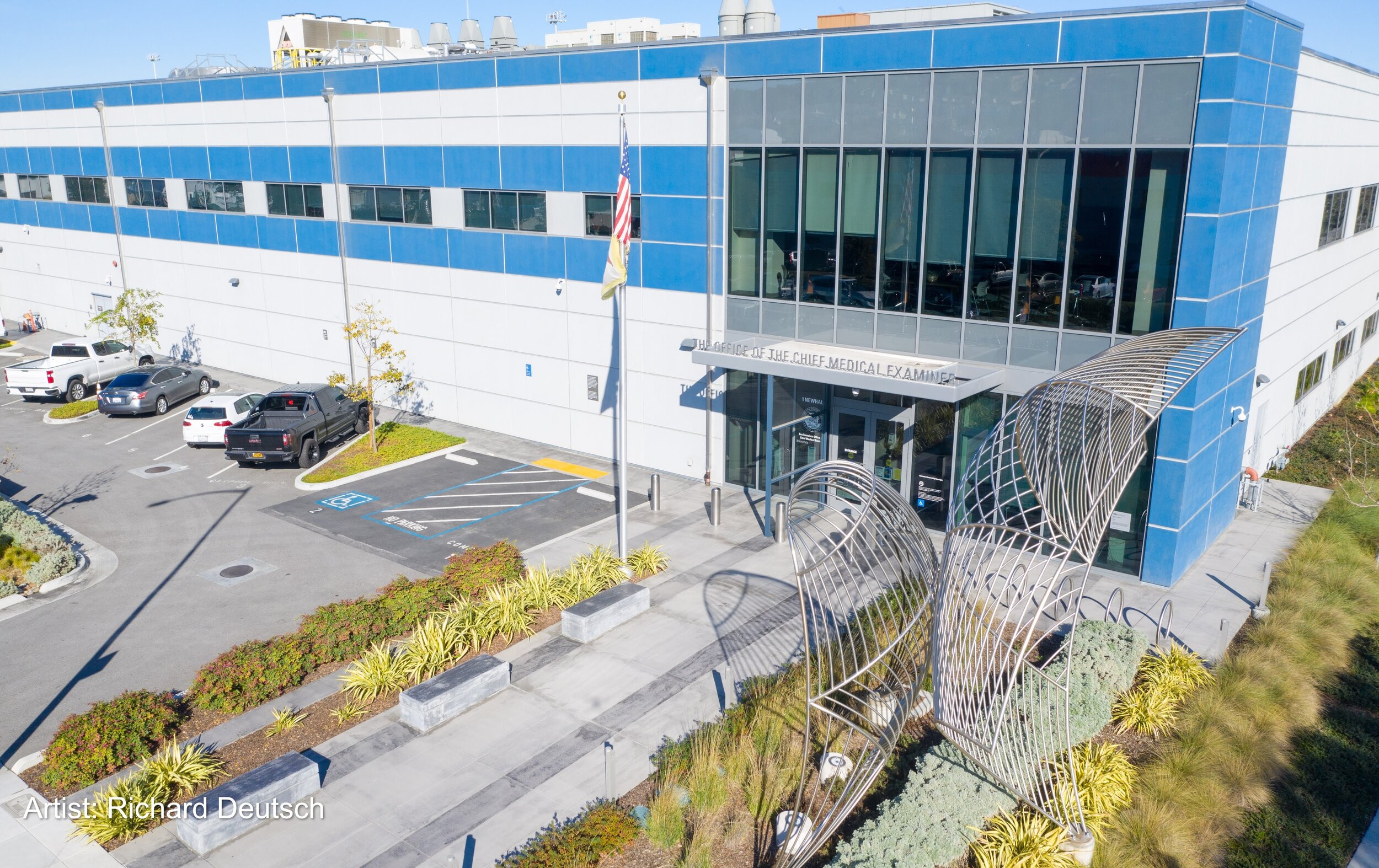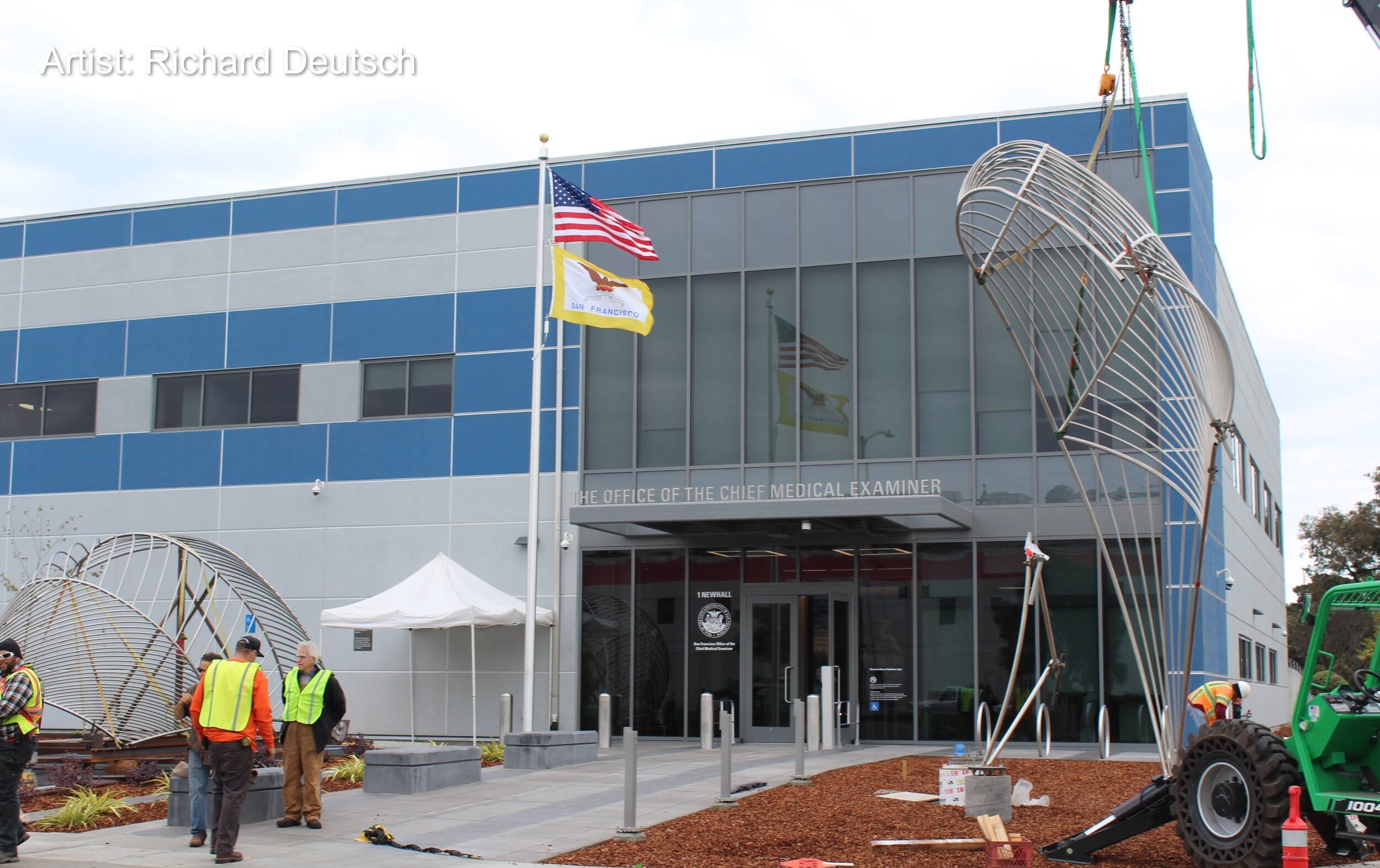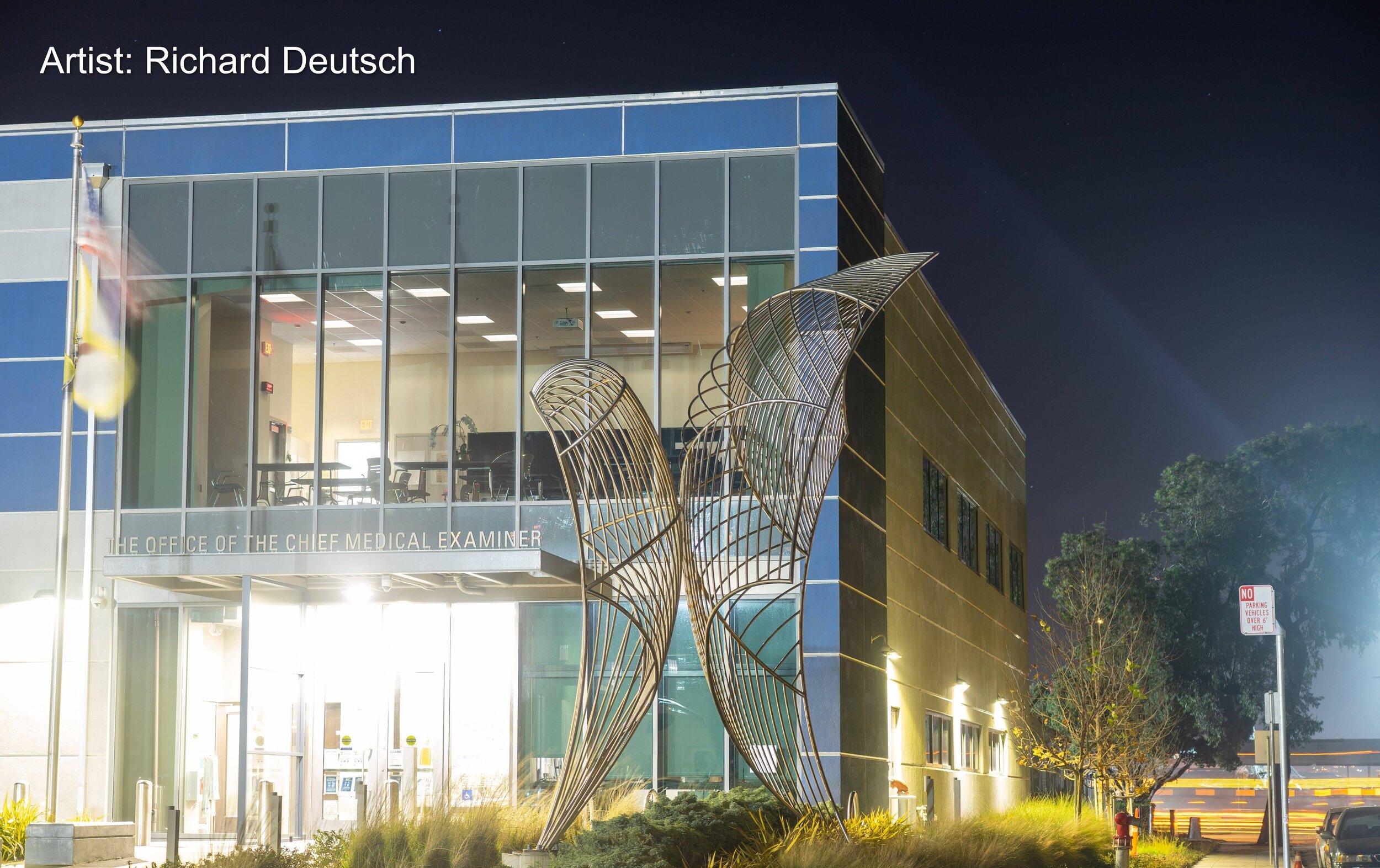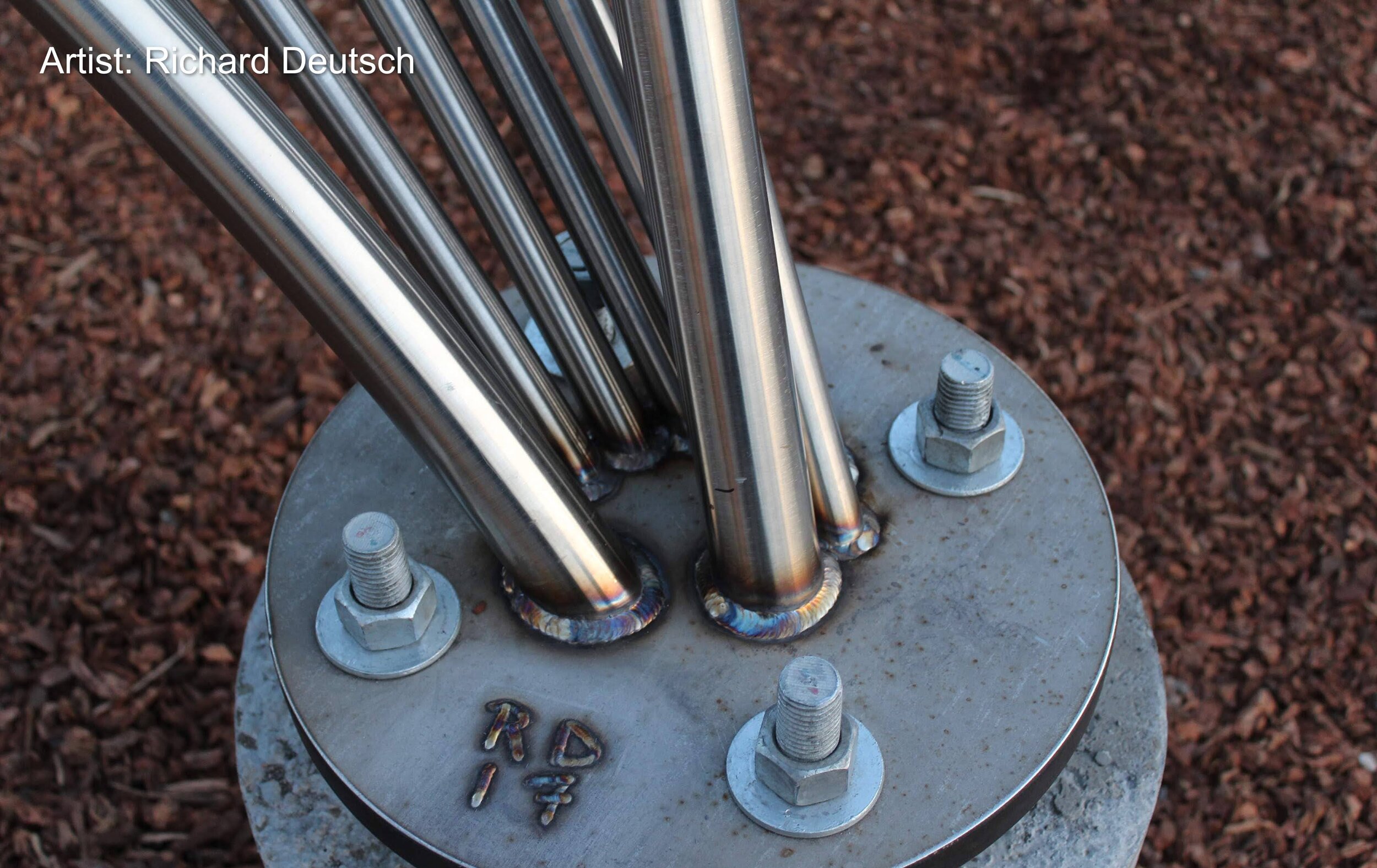
INDIAN BASIN, SAN FRANCISCO, CALIFORNIA
ALMA - Credits to Richard Deutsch Studio
Concept, Context, and Reference
Alma, the sculpture for the Office of the Chief Medical Examiner, celebrates India Basin’s rich boat-building past while providing a lasting symbol for its promising and ambitious future. The sculpture abstractly represents full sails as they assume form by the force of the wind: uplifting, dynamic, dramatic, and poised as a bird in flight. Alma is now a landmark that defines the upper end of India Basin while serving as a beacon for the Office of the Chief Medical Examiner. At night, LED lights project a soothing, soft amber color illuminating the sculpture.
Alma, the Scow Schooner
Between 1850 and the early years of the 20th century, the best routes around the San Francisco Bay Area were its waterways. India Basin was a bustling harbor and shipyard. The many scow schooners built at the dry docks of Hunters Point shuttled hay, produce, and supplies around the bay. Born at Hunters Point Shipyard, Alma is the last local scow schooner afloat and is the oldest documented vessel on the West Coast still certified to carry passengers. A flat-bottomed scow schooner, Alma was built in 1891 by Fred Siemer, who named it after his daughter. The proposed sculpture Alma is inspired by the sails of this historic schooner and directly appropriates its name in tribute to a vital and rich boat building past.
For centuries, the joyful vision of billowing sails on the San Francisco Bay has been a delight to its residents and visitors. In fact, the great Seal of the State of California, c. 1849, depicts sailboats on the San Francisco Bay, symbolizing economic strength and societal wellbeing. Moving forward, sails seen out on the bay represent a sense of freedom, tranquility, a lust for life, and the vitality that are characteristic of the people of San Francisco. The proposed sculpture Alma symbolizes these attributes.





